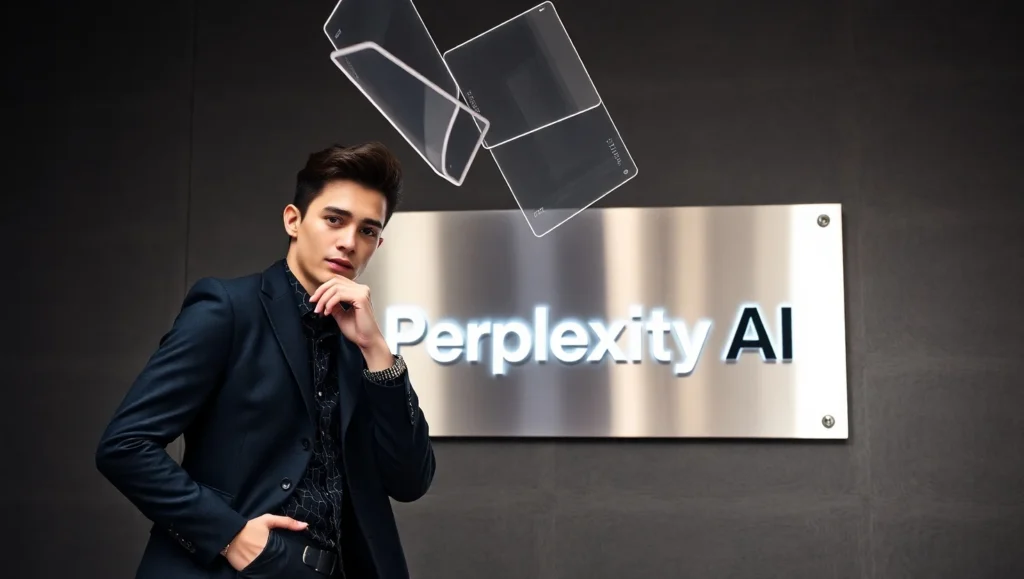Table of Contents
5 Advanced Tricks to Boost Perplexity AI Results: The landscape of artificial intelligence has transformed dramatically in recent years, and among the most promising developments is the emergence of Perplexity AI as a powerful research and query tool. For AI experts, students, and IT professionals, mastering advanced query techniques can mean the difference between obtaining basic responses and accessing truly valuable insights that drive innovation and decision-making.
While many users approach Perplexity AI with simple, straightforward questions, the platform’s true potential lies in its ability to respond to sophisticated, well-crafted queries that leverage advanced prompt engineering principles. This comprehensive guide explores five advanced query tricks that will significantly enhance your Perplexity AI results, helping you extract more precise, relevant, and actionable information from your interactions.
Whether you’re conducting research for academic purposes, developing solutions for enterprise clients, or seeking to optimize your AI workflow, these advanced techniques will transform your approach to query formulation and dramatically improve the quality of your AI-generated outputs.

Understanding the Foundation of Effective Query Engineering in Perplexity AI
Before diving into specific techniques, it’s essential to understand the fundamental principles that govern effective query engineering in Perplexity AI. The platform operates on sophisticated language models that respond best to clear, contextual, and strategically structured inputs.
Query engineering represents the art and science of crafting prompts that maximize the AI’s comprehension and response quality. Unlike traditional search engines that rely on keyword matching, Perplexity AI processes natural language with nuanced understanding, making it crucial to approach query formulation with strategic intent. 5 Advanced Tricks to Boost Perplexity AI Results.
The most effective queries combine specificity with context, providing the AI with sufficient information to understand not just what you’re asking, but why you’re asking it and what type of response would be most valuable. This approach requires understanding both the technical capabilities of the platform and the cognitive patterns that drive optimal AI responses.
The Science Behind Query Optimization
Effective query optimization in Perplexity AI relies on several key principles that mirror how advanced language models process and interpret information. The platform’s underlying architecture is designed to identify patterns, relationships, and contextual cues within your queries, making it essential to structure your inputs in ways that align with these processing mechanisms.
When you submit a query to Perplexity AI, the system analyzes multiple layers of meaning, including semantic relationships, contextual implications, and intended outcomes. By understanding these processing patterns, you can craft queries that provide the AI with clearer signals about your requirements and expectations. 5 Advanced Tricks to Boost Perplexity AI Results.
The most successful queries incorporate elements of specificity, context, and strategic framing that guide the AI toward generating responses that are not only accurate but also immediately applicable to your specific use case or research objectives.

Advanced Technique 1: Context Layering for Enhanced Precision
Context layering represents one of the most powerful advanced query techniques available to Perplexity AI users. This approach involves structuring your queries with multiple levels of contextual information that guide the AI toward more precise and relevant responses.
The technique begins with establishing a clear contextual framework at the beginning of your query. Instead of asking a direct question immediately, you provide background information, specify your role or perspective, and outline the specific context in which you need the information. This approach significantly improves the AI’s ability to tailor its response to your exact requirements. 5 Advanced Tricks to Boost Perplexity AI Results.
For example, rather than asking “What are the best practices for machine learning model deployment?”, a context-layered query might begin: “As a senior data scientist working in a financial services company with strict regulatory requirements, I need to understand the best practices for machine learning model deployment that specifically address compliance, scalability, and risk management considerations.”
Implementing Multi-Dimensional Context
Multi-dimensional context involves providing information across several relevant dimensions simultaneously. These dimensions typically include your professional role, industry context, technical constraints, timeline considerations, and specific outcome requirements. By addressing multiple contextual dimensions, you enable the AI to generate responses that are precisely aligned with your needs.
This technique is particularly valuable when dealing with complex technical topics that have different implications across various industries or use cases. The AI can leverage the contextual information to filter and prioritize information that is most relevant to your specific situation, resulting in more targeted and actionable responses. 5 Advanced Tricks to Boost Perplexity AI Results.
When implementing multi-dimensional context, focus on providing information that directly influences the type of response you need. Avoid including unnecessary details that might confuse the AI or dilute the focus of your query, while ensuring that all critical contextual elements are clearly communicated.

Advanced Technique 2: Progressive Query Refinement
Progressive query refinement is a sophisticated approach that involves structuring your queries as a series of connected, increasingly specific questions that build upon each other. This technique is particularly effective for complex research topics or when you need to explore a subject from multiple angles. 5 Advanced Tricks to Boost Perplexity AI Results.
The process begins with a broad, foundational query that establishes the general topic and context. Subsequent queries then dive deeper into specific aspects, using the information from previous responses to inform and refine your approach. This method allows you to develop a comprehensive understanding of complex topics while maintaining focus and precision throughout the research process.
This technique is especially valuable for IT professionals and researchers who need to explore technical topics systematically. By breaking down complex subjects into manageable components and exploring each component thoroughly, you can develop a more complete and nuanced understanding of the topic at hand.
Building Query Chains for Comprehensive Analysis
Query chains represent a structured approach to progressive refinement that involves planning a series of related queries before beginning your research. This forward-thinking approach ensures that each query builds logically on the previous one, creating a comprehensive exploration of your topic.
When building query chains, start by identifying the key components or aspects of your topic that need to be explored. Then, structure your queries to address these components in a logical sequence, with each query incorporating insights and information from the previous responses. 5 Advanced Tricks to Boost Perplexity AI Results.
This approach is particularly effective for complex technical analyses, market research, or academic investigations where comprehensive coverage is essential. By planning your query sequence in advance, you can ensure that your research is thorough, systematic, and produces actionable insights.

Advanced Technique 3: Constraint-Based Query Formulation
Constraint-based query formulation involves explicitly defining parameters, limitations, and requirements within your queries to guide the AI toward more focused and relevant responses. This technique is particularly valuable for professionals who need information that meets specific criteria or constraints.
The approach involves identifying and articulating the various constraints that apply to your situation, then incorporating these constraints directly into your query structure. Constraints might include technical specifications, budget limitations, time constraints, regulatory requirements, or specific performance criteria. 5 Advanced Tricks to Boost Perplexity AI Results.
By explicitly stating these constraints, you enable the AI to filter and prioritize information that is actually applicable to your situation. This approach prevents the generation of responses that, while technically accurate, may not be practically useful given your specific limitations and requirements.
Implementing Technical and Business Constraints
Technical constraints in query formulation involve specifying the technological environment, performance requirements, compatibility needs, and other technical parameters that influence the relevance of the AI’s response. These constraints help ensure that the information provided is technically feasible and appropriate for your specific context.
Business constraints involve considerations such as budget limitations, timeline requirements, regulatory compliance needs, and organizational policies. By incorporating these constraints into your queries, you can ensure that the AI’s recommendations are not only technically sound but also practically implementable within your organizational context. 5 Advanced Tricks to Boost Perplexity AI Results.
The key to effective constraint-based formulation is being specific and comprehensive in defining your limitations while avoiding overly restrictive parameters that might prevent the AI from identifying creative or innovative solutions to your challenges.

Advanced Technique 4: Outcome-Oriented Query Structuring
Outcome-oriented query structuring focuses on clearly defining the desired end result or output format within your query, enabling the AI to tailor its response structure and content to meet your specific needs. This technique is particularly valuable for professionals who need information in specific formats or for particular applications.
The approach involves explicitly stating not just what information you need, but how you plan to use that information and what format would be most valuable for your purposes. This might include requesting specific output formats, particular types of analysis, or responses structured for specific audiences or applications. 5 Advanced Tricks to Boost Perplexity AI Results.
By clearly communicating your intended outcome, you enable the AI to optimize its response for your specific use case, potentially saving significant time in post-processing and adaptation. This approach is particularly valuable for professionals who need to integrate AI-generated content into reports, presentations, or decision-making processes.
Designing Format-Specific Queries
Format-specific queries involve explicitly requesting information in particular structures or formats that align with your intended use. This might include requesting bulleted lists, comparative tables, step-by-step procedures, or analysis frameworks that can be directly integrated into your work products.
When designing format-specific queries, consider both the type of information you need and how you plan to use that information. By aligning the AI’s output format with your intended application, you can significantly reduce the time and effort required to integrate the information into your workflow. 5 Advanced Tricks to Boost Perplexity AI Results.
This approach is particularly valuable for professionals who regularly need to generate reports, presentations, or documentation that incorporates AI-generated insights and recommendations.

Advanced Technique 5: Iterative Validation and Refinement
Iterative validation and refinement involves using follow-up queries to verify, expand, or refine the AI’s initial responses, creating a more robust and comprehensive understanding of your topic. This technique acknowledges that complex topics often require multiple interactions to fully explore and understand.
The process begins with an initial query that establishes the foundation of your research. Subsequent queries then focus on validating specific aspects of the response, exploring alternative perspectives, or diving deeper into particular components that require additional investigation. 5 Advanced Tricks to Boost Perplexity AI Results.
This technique is particularly valuable for critical decision-making processes where accuracy and comprehensiveness are essential. By systematically validating and refining the AI’s responses, you can build confidence in the information and ensure that your understanding is both accurate and complete.
Implementing Systematic Validation Protocols
Systematic validation protocols involve developing standardized approaches to verifying and expanding upon AI-generated responses. This might include cross-referencing information from multiple sources, exploring potential counterarguments or alternative perspectives, or testing the practical applicability of recommendations.
When implementing validation protocols, focus on the aspects of the AI’s response that are most critical to your decision-making process. This might include fact-checking specific claims, exploring the limitations or assumptions underlying recommendations, or investigating potential risks or challenges that might not have been fully addressed in the initial response. 5 Advanced Tricks to Boost Perplexity AI Results.
The goal of systematic validation is to build a comprehensive and reliable understanding of your topic that can confidently support important decisions or actions.

Maximizing Your Perplexity AI Query Performance
The advanced techniques outlined in this guide represent powerful tools for enhancing your Perplexity AI query performance, but their effectiveness depends on consistent application and continuous refinement of your approach. The most successful AI practitioners develop systematic approaches to query formulation that incorporate these techniques naturally into their workflow. 5 Advanced Tricks to Boost Perplexity AI Results.
As you implement these advanced query techniques, remember that mastery comes through practice and experimentation. Each technique offers unique advantages for different types of queries and research objectives, and the most effective approach often involves combining multiple techniques within a single query or research process.
The landscape of AI query optimization continues to evolve rapidly, with new techniques and approaches emerging regularly. By mastering these foundational advanced techniques, you’ll be well-positioned to adapt to future developments and continue optimizing your AI interactions for maximum effectiveness and value.
The investment of time and effort required to master these advanced query techniques will pay dividends in improved research efficiency, enhanced decision-making capabilities, and more sophisticated AI-powered insights that drive innovation and success in your professional endeavors. 5 Advanced Tricks to Boost Perplexity AI Results.
By implementing these five advanced query tricks consistently and systematically, you’ll transform your relationship with Perplexity AI from a simple question-and-answer interaction to a sophisticated research and analysis partnership that significantly enhances your capabilities and outcomes.

Frequently Asked Questions (FAQs) About 5 Advanced Tricks to Boost Perplexity AI Results
What is “context layering,” and why does it improve Perplexity AI responses?
Context layering means embedding multiple levels of background (role, industry, objectives) before asking your question. It gives the model clear signals about why you need the information and how to frame its answer—resulting in more precise, relevant insights. 5 Advanced Tricks to Boost Perplexity AI Results.
How do I set up a “query chain” for comprehensive analysis?
A query chain is a predetermined sequence of questions that build on each other. Start broad (e.g., “What are modern ML deployment challenges?”), then narrow into specifics (regulatory compliance, scaling strategies, security measures). This structured progression yields a full, systematic exploration. 5 Advanced Tricks to Boost Perplexity AI Results.
When should I use constraint-based queries, and what constraints work best?
Use constraint-based queries whenever you have clear boundaries—like budget caps, regulatory mandates, or tech-stack limits. Effective constraints are specific (e.g., “answers only for Kubernetes-based deployments under $10K/month”) so the AI filters out irrelevant options. 5 Advanced Tricks to Boost Perplexity AI Results.
What’s the difference between “progressive query refinement” and follow‑up questions?
Progressive refinement is deliberate: you plan a ladder of queries in advance, each more detailed than the last. Follow-ups are reactive. Refinement ensures each stage logically builds on the previous, maximizing depth and minimizing redundancy. 5 Advanced Tricks to Boost Perplexity AI Results.
How can I ensure the AI delivers results in the format I need?
Use outcome‑oriented structuring: explicitly state your desired format (bulleted lists, tables, step-by-step guides, code snippets, etc.). For example: “Provide a bulleted list of five model‑deployment best practices, then a comparative table of tools.” 5 Advanced Tricks to Boost Perplexity AI Results.
What role does “iterative validation” play in high‑stakes research?
Iterative validation means cross‑checking and refining the AI’s initial answers through follow‑up prompts. You might ask, “What assumptions underlie these recommendations?” or “Compare these with academic sources.” This builds confidence and uncovers blind spots. 5 Advanced Tricks to Boost Perplexity AI Results.
How much contextual detail is too much when layering context?
Strike a balance: include only details that directly influence your outcome (role, industry, key constraints). Avoid irrelevant narrative that can dilute focus. Aim for 2–5 critical context dimensions—not entire background stories. 5 Advanced Tricks to Boost Perplexity AI Results.
Can these advanced query techniques work with other LLM tools?
Absolutely. While tuned to Perplexity AI’s strengths, context layering, constraint‑based queries, and progressive chains apply to most advanced LLMs. Always tailor prompts to the specific model’s features and interface. 5 Advanced Tricks to Boost Perplexity AI Results.
How do I measure whether my advanced techniques actually improve results?
Define clear success metrics—accuracy, relevance score, time saved, or integration ease. Run A/B tests: compare basic vs. advanced‑crafted queries on identical tasks, then evaluate differences against your metrics. 5 Advanced Tricks to Boost Perplexity AI Results.
What’s the best way to combine multiple techniques in a single query?
Lead with context layering, include key constraints, and specify the desired output format—all in one prompt. For example: “As a fintech data lead (context), under a $5K/month budget (constraint), provide a step-by‑step deployment checklist (format) for machine‑learning models in Kubernetes.”
This multi-technique approach yields highly targeted, actionable results. 5 Advanced Tricks to Boost Perplexity AI Results.

5 thoughts on “Elevate Your AI: 5 Advanced Tricks to Boost Perplexity AI Results 🚀”